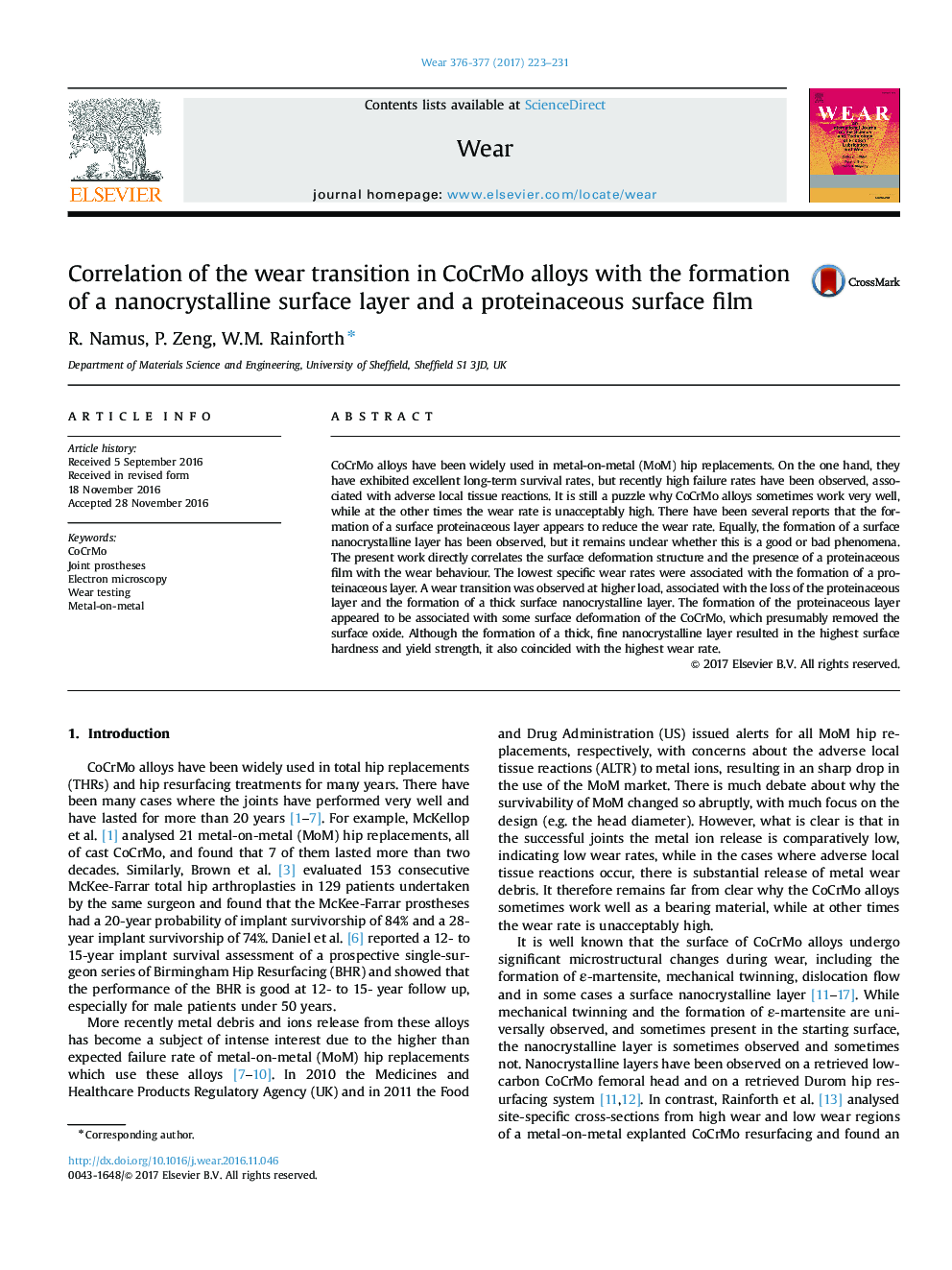| Article ID | Journal | Published Year | Pages | File Type |
|---|---|---|---|---|
| 4986687 | Wear | 2017 | 9 Pages |
Abstract
CoCrMo alloys have been widely used in metal-on-metal (MoM) hip replacements. On the one hand, they have exhibited excellent long-term survival rates, but recently high failure rates have been observed, associated with adverse local tissue reactions. It is still a puzzle why CoCrMo alloys sometimes work very well, while at the other times the wear rate is unacceptably high. There have been several reports that the formation of a surface proteinaceous layer appears to reduce the wear rate. Equally, the formation of a surface nanocrystalline layer has been observed, but it remains unclear whether this is a good or bad phenomena. The present work directly correlates the surface deformation structure and the presence of a proteinaceous film with the wear behaviour. The lowest specific wear rates were associated with the formation of a proteinaceous layer. A wear transition was observed at higher load, associated with the loss of the proteinaceous layer and the formation of a thick surface nanocrystalline layer. The formation of the proteinaceous layer appeared to be associated with some surface deformation of the CoCrMo, which presumably removed the surface oxide. Although the formation of a thick, fine nanocrystalline layer resulted in the highest surface hardness and yield strength, it also coincided with the highest wear rate.
Related Topics
Physical Sciences and Engineering
Chemical Engineering
Colloid and Surface Chemistry
Authors
R. Namus, P. Zeng, W.M. Rainforth,
